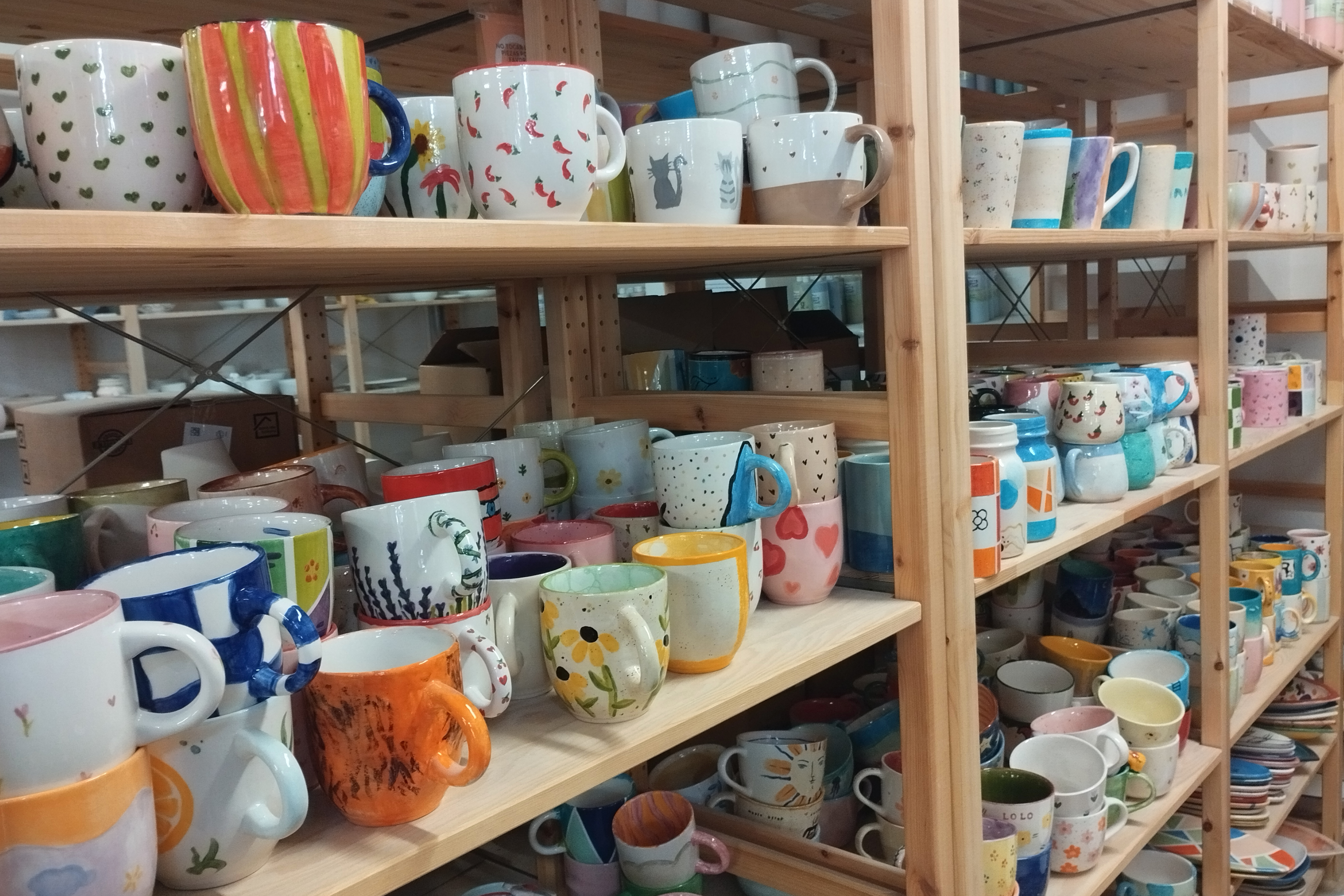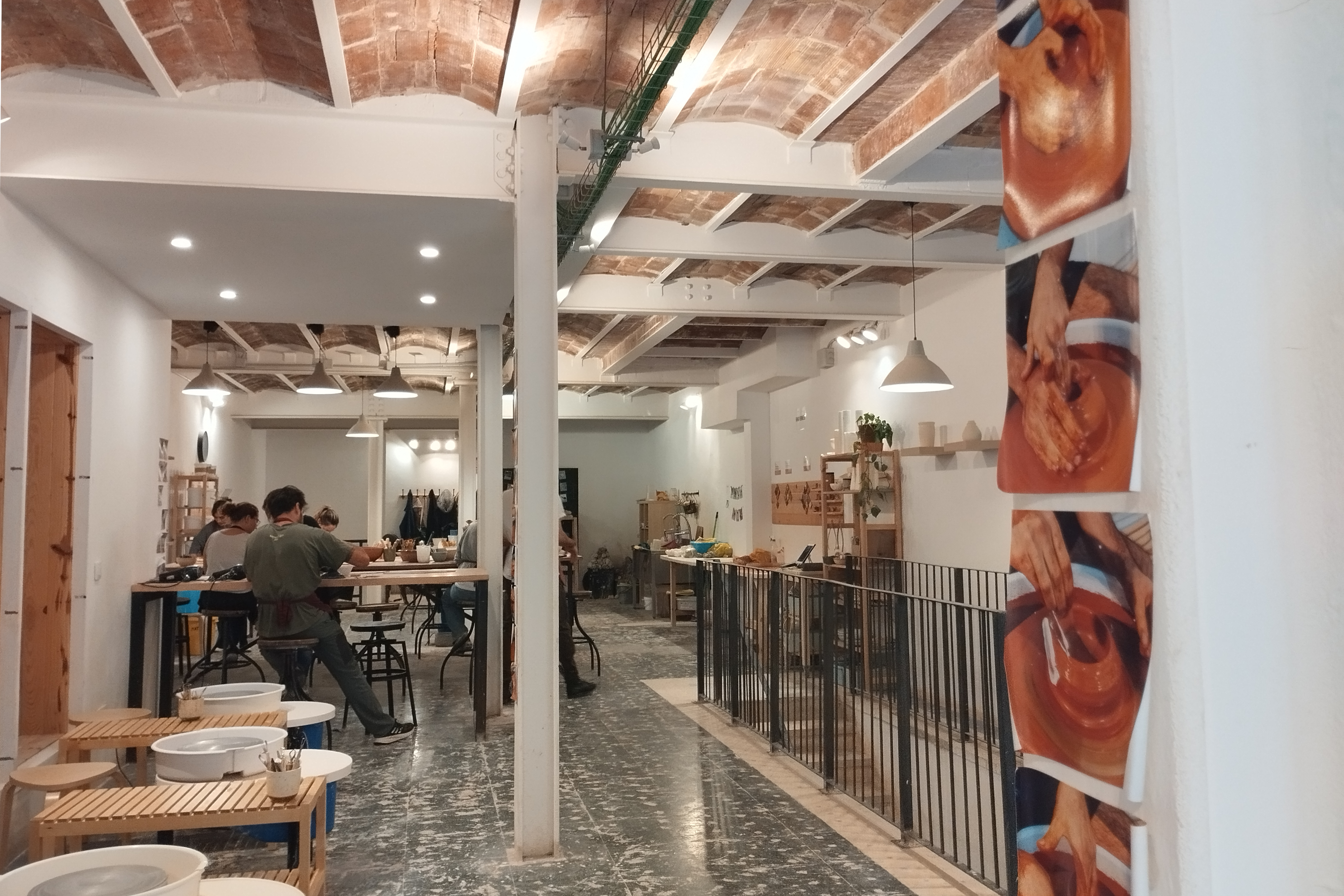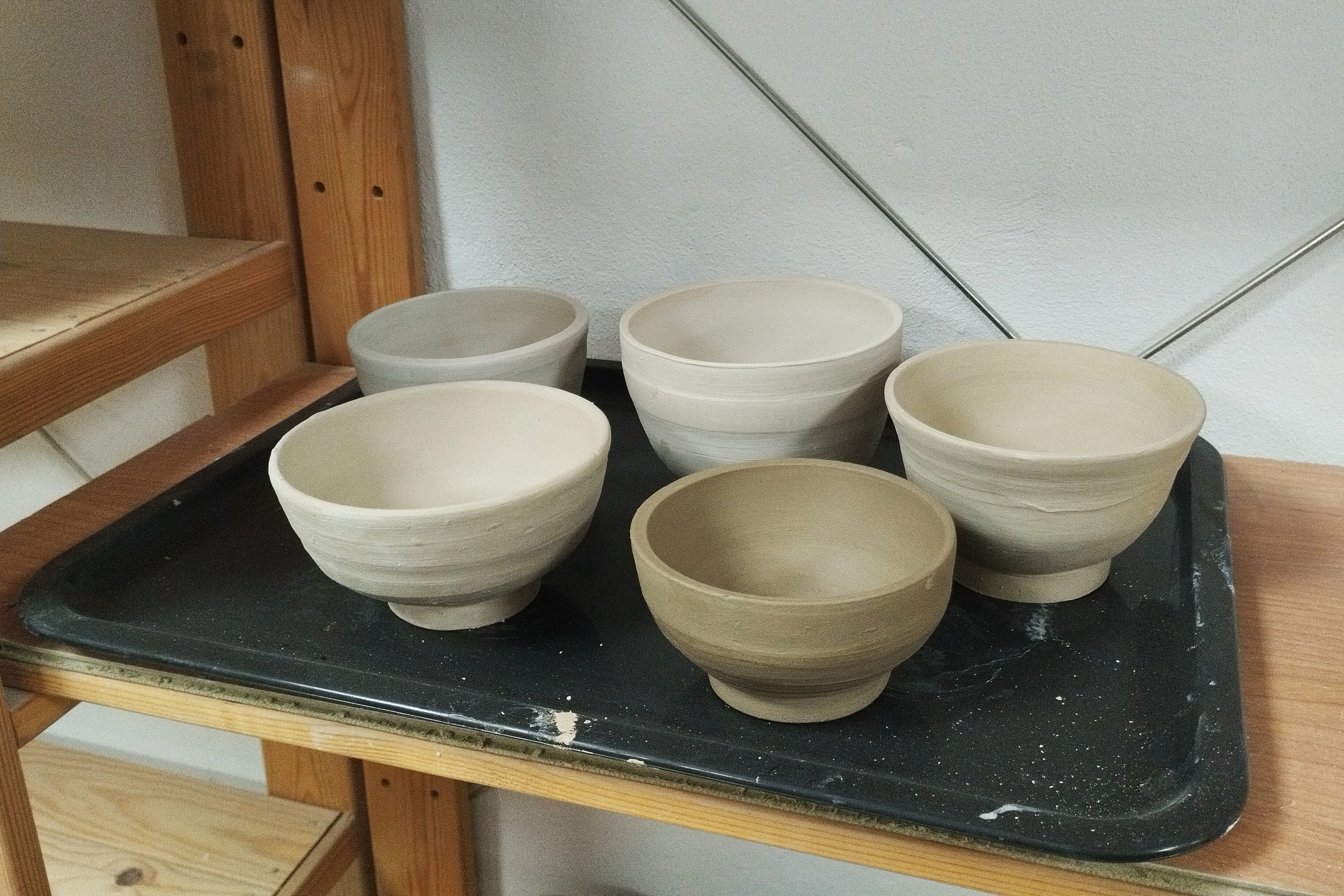The ceramics boom: activity at Barcelona pottery workshops skyrocket
Practice of craft provides therapeutic benefits but can also lead to professional opportunities

Since the pandemic, ceramics have become an increasingly popular activity across the world. More and more people have embraced it as a new hobby to spend quality time shaping and painting mugs and plates, either as something to practice with friends or even alone.
The Barcelona neighbourhood of Gràcia has gone from having only three ceramic workshops according to an article in Ara from 2019, to now having at least seventeen that can be counted on Google Maps, each with its own unique characteristics.

The growing trend has also been seen in the local Civic Centres, community hall spaces found across Catalan cities and towns, where pottery courses attract younger participants. They’ve since become some of the most successful activities in these spaces, thanks also to their affordable prices.
The Catalan capital even sees some craft workshops take place on the street: for instance, the Fet al Born monthly fairs have seen attendances of more than 700 people.
Connection with ourselves
But ceramics are not new, in fact, it is a very ancient technique of about 30,000 years old. So why is it going through this boom now?
According to Andreu Sorolla, “it is simply people finding themselves needing to do things that allow them to disconnect. Just like a few years ago, people started doing yoga or more physical activities. People don't come to our workshop to make the piece of their life, but they come to share a space with friends or to dedicate time to oneself.”

In his case, he was a web programmer who started as an amateur but ended up opening two ceramic workshops in Gràcia, La Torratxa and La Torreta. “The feeling I have when I'm at the potter’s wheel is spectacular, it’s as if nothing else exists,” he enthusiastically expresses.
“It's really cool and very relaxing,” Cristina Batiste, an amateur clay enthusiast, says. “From young to old, I believe it's both an art and a hobby, and it's a creative way that almost everyone enjoys. Getting your hands dirty and being able to make those little plates we used to make as kids, a candleholder, a little cup or a plate, any little thing is already hugely rewarding.”

Maria Pedró was studying Fine Arts when she discovered her vocation. Nowadays, she teaches modelling and pottery wheel courses at Cova de Fang, a workshop in Molins de Rei, a town near Barcelona.
For her, “clay is a form of art that is enjoyed and appreciated because it works well, and things with volume are very eye-catching. These objects have life, presence, and a body.”

“Many people experience stress, and a way to release or manage it can be through manual activities. In the case of ceramics, clay is a material that grounds you to the earth, and touching it with our hands helps us connect to our ancient origins,” she explains.

“We’ve lost contact with certain tasks technology may now handle, and this has fuelled a greater need to reconnect with ourselves and to return to hands-on activities and engage in artistic pursuits and expressive endeavours,” she adds.
Democratization and exploitation
The growth in popularity of pottery has spread knowledge of techniques. “A lot of the ceramics boom is good because it allows people who have never had contact with clay to learn this discipline,” Maria argues.
However, that brings some problems: “There is a really dangerous part which is the issue of trivializing the craft, that everyone can do pottery or that everyone can teach it”, she adds.
“Like any trend, some have seen this interest as an opportunity for business and have taken advantage of working with hands. Many people who may not be dedicated to the ceramics world, who may be entrepreneurs, believe that it is a good sector to invest in right now and open a workshop without having previous knowledge of it,” she says.

Industrialization of a craft
Professionals and enthusiasts alike agree that pottery is a beneficial but costly artisanal craft which requires patience and dedication. Throughout the whole process, days go by. Pieces need to be fired in the kiln, trimmed, and glazed, and this doesn’t event count the the training, creation of ideas, and possible breakages.
Cristina recognizes it’s also an expensive hobby. But for Andreu, “by making a few pots, you realize the work involved, and you begin to appreciate the value of a handmade cup over those made by a machine in bulk.”
Therefore, the point of making pottery is not only to produce a functional object, but to be able to devote our time to creating a unique artisanal piece.